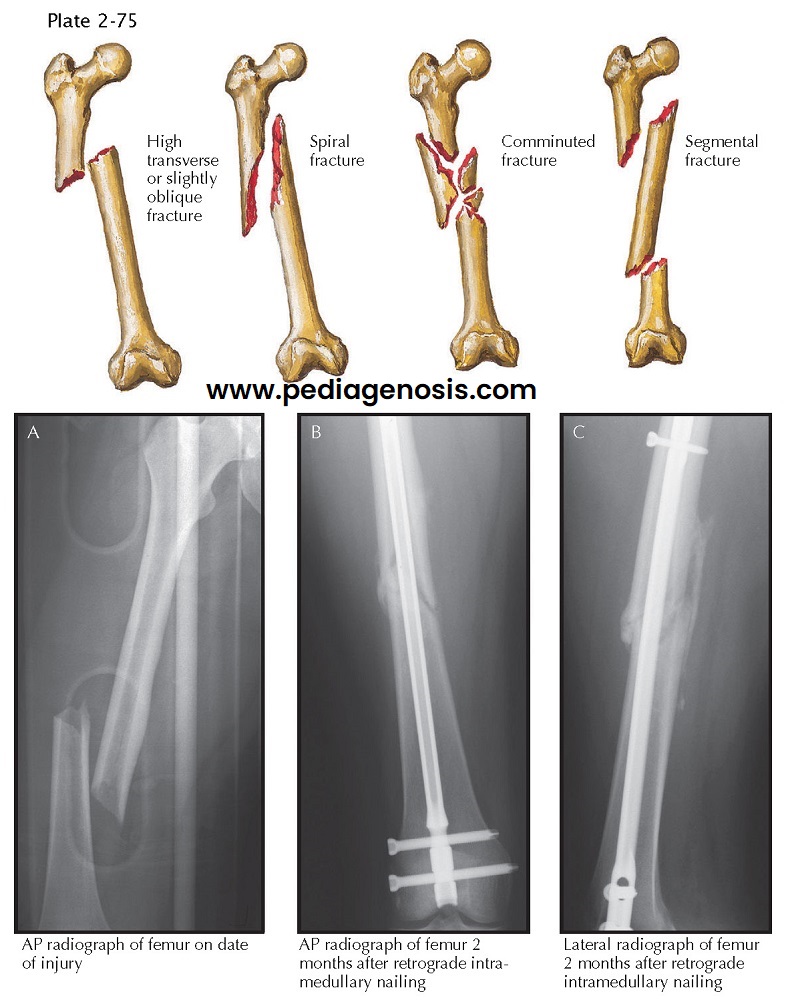FRACTURE OF SHAFT OF FEMUR
Femoral shaft
fractures occur in all age groups but are more common in younger than in
elderly persons. Several types of fractures can result from simple trauma to
high-velocity trauma. Spiral fractures are most commonly due to low-velocity
torsional forces applied to the femur, whereas comminuted, segmental, and transverse
fractures all result from greater forces. About 15% of femoral shaft fractures
are open injuries, but associated neurovascular involvement is not common.
The traditional treatment of fractures of the femoral shaft begins with skeletal traction, which is followed by immobilization in either a hip spica cast or a fracture brace. Generally, skeletal traction is applied by placing a pin through the proximal tibia and aligning the fracture. Once fracture callus forms and the fracture site is no longer tender, traction is discontinued and a cast or brace applied.
Until recently, femoral fractures were immobilized in
a one and one-half hip spica cast that did not allow knee flexion. Newer methods
of immobilization, such as the fracture brace, allow early knee motion and
rehabilitation of both the quadriceps and the hamstring muscles. With the
fracture brace, the patient is allowed to walk using crutches and to place as
much weight on the injured limb as symptoms allow.
A major advance in the treatment of femoral fractures
is the use of closed intramedullary nailing guided by a C-arm image
intensifier. As the complexity of femoral fractures increased, advances in the technology of intra-medullary nails
also occurred. Even severely comminuted femoral fractures can now be securely
fixated with standard and modified intramedullary devices. However, the major
impact of intramedullary nailing has been on the treatment of femoral shaft
fractures in patients with multiple injuries. Early fracture stabilization
allows these patients to be upright and out of bed soon after injury, which
decreases the incidence of adult respiratory
distress syndrome and, possibly, of multiple organ system failure, which often
accompanies multiple injuries.
When an isolated femoral shaft fracture is treated with intramedullary nailing, the patient is allowed out of bed very early. First mobilized using crutches, the patient increases weight bearing on the injured side based on the results of follow-up clinical and radiographic examinations.





